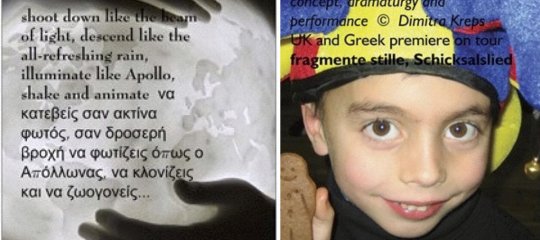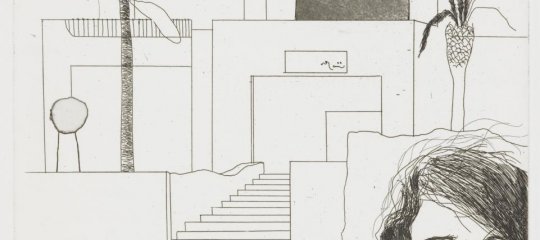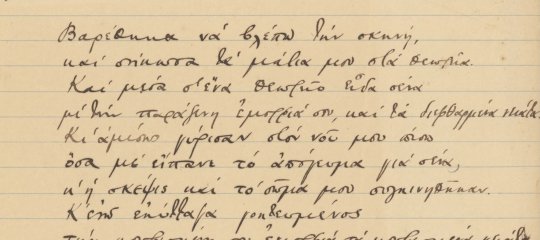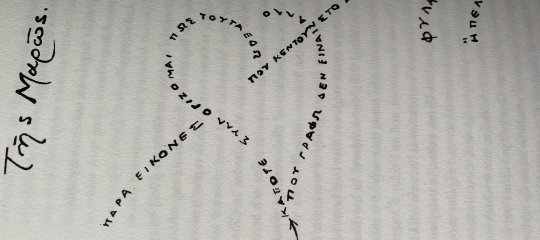Εξάσκηση στην παραγωγή προφορικού (επίπεδο αρχαρίων) - Π. Βλαχόπουλος
Aberdeen Scottish Hellenic Society
Modern Greek Classes 2005-2006
Εξάσκηση Προφορικού λόγου
Μια εμπειρική προσέγγιση
(Speaking Exercise based on experiential learning)
‘Παίζουμε Θέατρο;’
(Role Play)
(Διάρκεια 45 λεπτά περίπου)
Στο πλαίσιο των δραστηριοτήτων (2005-2006) του μη κερδοσκοπικού συλλόγου Aberdeen Scottish Hellenic Society αποφασίσαμε τη διδασκαλία της ελληνικής γλώσσας στο τμήμα Δια Βίου Μάθησης του Πανεπιστημίου του Aberdeen Σκωτίας. Φέτος υπάρχουν τριά τμήματα: Beginners ( με 16 μαθητές/τριες), Post-Beginners( με 8 μαθητές/τριες) & Conversation groups (με 6 μαθητές/τριες).
H προτεινόμενη άσκηση, αν και έχει χρησιμοποιηθεί στο Post-Beginners level, μπορεί να προσαρμοστεί σε οποιοδήποτε επίπεδο, με κατάλληλη τροποποίηση των σεναρίων και του λεξιλογίου. Η συγκεκριμένη προσέγγιση βασίζεται στη θεωρία εκμάθησης ενηλίκων του David Kolb (1984): Experiential Learning. Οι μαθητές και οι μαθήτριες θα ‘αποκτήσουν’ μια εμπειρία επικοινωνίας στα ελληνικά, βασισμένη σε λεξιλόγιο και εκφράσεις απο το βιβλίο τους αλλά και απο τις προσωπικές τους εμπειρίες απο την Ελλάδα (ταξίδια, φίλους, μουσική κτλ.) και θα αλληλο-αξιολογήσουν όχι μόνο το λεξιλόγιο και τις εκφράσεις τους, αλλά και την διαδικασία προφορικής επικοινωνίας (πχ. τόνος της φωνής, ρυθμός, επιλογή κατάλληλων εκφράσεων κ.α.). Η δυνατότητα της αλληλο-αξιολόγησης είναι εφικτή με τη χρήση βιντεοκάμερας και τη δυνατότητα της επανάληψης της εμπειρίας.
Οι μαθητές και οι μαθήτριες απο την αρχή της ακαδημαικής χρονιάς κρατούν ένα σημειωματάριο ‘γνώσης’ (learning journal) στο όποιο καταγράφουν συναισθήματα, εμπειρίες, δυσκολίες που γεννούνται κατα τη διάρκεια των μαθημάτων και σε τακτά χρονικά διαστήματα τα μοιράζονται με τον δάσκαλό και τους συμμαθητές τους. Στο τέλος του συγκεκριμένου μαθήματος θα κληθούν να γράψουν για την εμπειρία τους.
Έτοιμοι;
Ενημερώνουμε τους μαθητές και τις μαθήτριες μας για το ‘Παίζουμε Θέατρο’ και δίνουμε χρόνο (εγώ έδωσα μία εβδομάδα) για επανάληψη λεξιλογίου και εκφράσεων.
Χωρίζουμε τους μαθητές και τις μαθήτριες μας σε 2 ομάδες. Δίνουμε σε κάθε μια ομάδα ένα σενάριο και εξηγούμε την επικοινωνιακή κατάσταση στην οποία αναφέρεται. Κάθε ομάδα έχει 10 λεπτά να ετοιμάσει τις ερωτήσεις της και τις πιθανές απαντήσεις. Αμέσως μετά αρχίζει η δραματοποίηση. Ο/η διδάσκων/ουσα σημειώνει τις εκφράσεις που επέλεξαν οι ομάδες να χρησιμοποιήσουν χωρίς να παρεμβαίνει και στο τέλος όλοι μαζί αξιολογούν το λεξιλόγιο, τις εκφράσεις και τα όποια λάθη.
Σενάριο 1 (10 minutes)
Ομάδα 1 (Adele, Verna, Andrea & Nikki)
Η Adele, η Verna και η Andrea είναι στο αεροδρόμιο των Σπάτων. Μόλις έφτασαν από το Aberdeen στην Αθήνα για διακοπές 7 ημερών. Χρειάζονται πληροφορίες για το πως θα πάνε στο ξενοδοχείο. Το ξενοδοχείο τους λέγεται ‘Ερμής’ και βρίσκεται στο κέντρο της Αθήνας, στο Θησείο. Πηγαίνουν στο γραφείο πληροφοριών και αφού πουν από που έρχονται και πού θέλουν να πάνε, ρωτούν: Πως μπορούν να πάνε στο κέντρο της Αθήνας, αν υπάρχει τρένο ή μετρό, πόση ώρα κάνει κανείς να φτάσει, πόσο κοστίζει ένα εισιτήριο απλής μετάβασης και ποιές ώρες λειτουργούν τα μέσα συγκοινωνίας στην Αθήνα. Η ομάδα θα πρέπει να είναι έτοιμη να απαντήσει και σε ερωτήσεις της Information Desk Officer ( Nikki).
Η Nikki δουλεύει στο Athens Airport Information Desk. Καλωσορίζει τις τουρίστριες Adele, Verna και Andrea και απαντά στις ερωτήσεις τους με τη σειρά που αυτές τις ρωτάνε. Λέει πως το ξενοδοχείο ‘Ερμής’ είναι πολύ κοντά στο σταθμό του Μετρό ‘Μοναστηράκι’ και πως ο καλύτερος τρόπος να πάνε είναι με τον προαστιακό μέχρι το σταθμό ‘Εθνική Αμυνα’ και μετά με το Μετρό. Ρωτά τις τουρίστριες αν έχουν πολλες αποσκευές...και αν ναι...προτείνει να πάρουν ενα καροτσάκι. Τις ενημερώνει οτι υπάρχει τρένο κάθε 10 λεπτά και ότι κάνει 40 λεπτά να φτάσει στο κέντρο της Αθήνας. Το ειστήριο απλής μετάβασης κάνει 8 Ευρώ. Ρωτά πόσες μέρες θα μείνουν στην Αθήνα και προτείνει στις τουρίστριες να αγοράσουν μία κάρτα πολλαπλών διαδρομών που κάνει 30 Ευρώ και ισχύει για 7 μέρες σε όλα τα μέσα συγκοινωνίας. Χαιρετά τις τουρίστριες και τους εύχεται καλή διαμονή. br>
Σενάριο 2 (10 minutes)
Ομάδα 2 (Flora, Patricia, Ruth & Jean)
Η Flora, η Patricia και η Ruth είναι στην Πλάκα. Θέλουν να πάνε σε μιά παραδοσιακή ταβέρνα με ζωντανή μουσική και καλό ελληνικό φαγητό. Σταματούν λοιπόν τον Jean, έναν ελληνο-καναδό περαστικό και τον ρωτούν: Αν υπάρχει καμιά καλή ταβέρνα εκεί κοντά, πως λένε την ταβέρνα, αν έχει ζωντανή μουσική, μέχρι τι ώρα είναι ανοιχτή, ποιές είναι οι σπεσιαλιτέ και πόσο πάει περίπου το άτομο. Ακόμη θέλουν να μάθουν αν ο Jean είναι απο την Ελλάδα και πόσα χρόνια μένει στην Αθήνα.
Ο Jean, χαιρετά τις τουρίστριες και απαντά στις ερωτήσεις τους με τη σειρά που αυτές τις ρωτάνε. Η ταβέρνα που προτείνει είναι πολύ κοντά. Δεν θυμάται το όνομα αλλά εξηγεί πως είναι δυο δρόμους πιο κάτω, στην οδό Αναξιμάνδρου. Είναι η μοναδική ταβέρνα σε εκείνο το δρόμο. Έχει ζωντανή μουσική και είναι ανοιχτή μέχρι αργά. Επίσης λέει πως οι σπεσιαλιτέ είναι κρέατα της ώρας, φρέσκες σαλάτες και καλό κόκκινο κρασί. Ρωτά τις τουρίστριες από πού είναι και συμπληρώνει ότι είναι ελληνο-καναδός και ότι ζει στην Αθήνα εδώ και 8 χρόνια.
Καλη επιτυχία!










